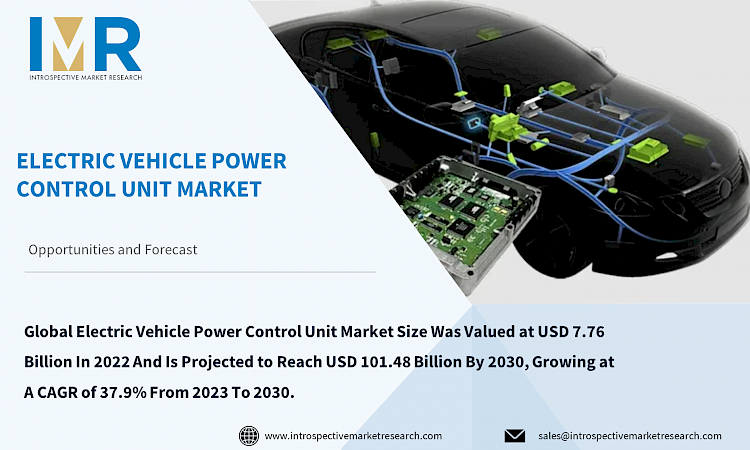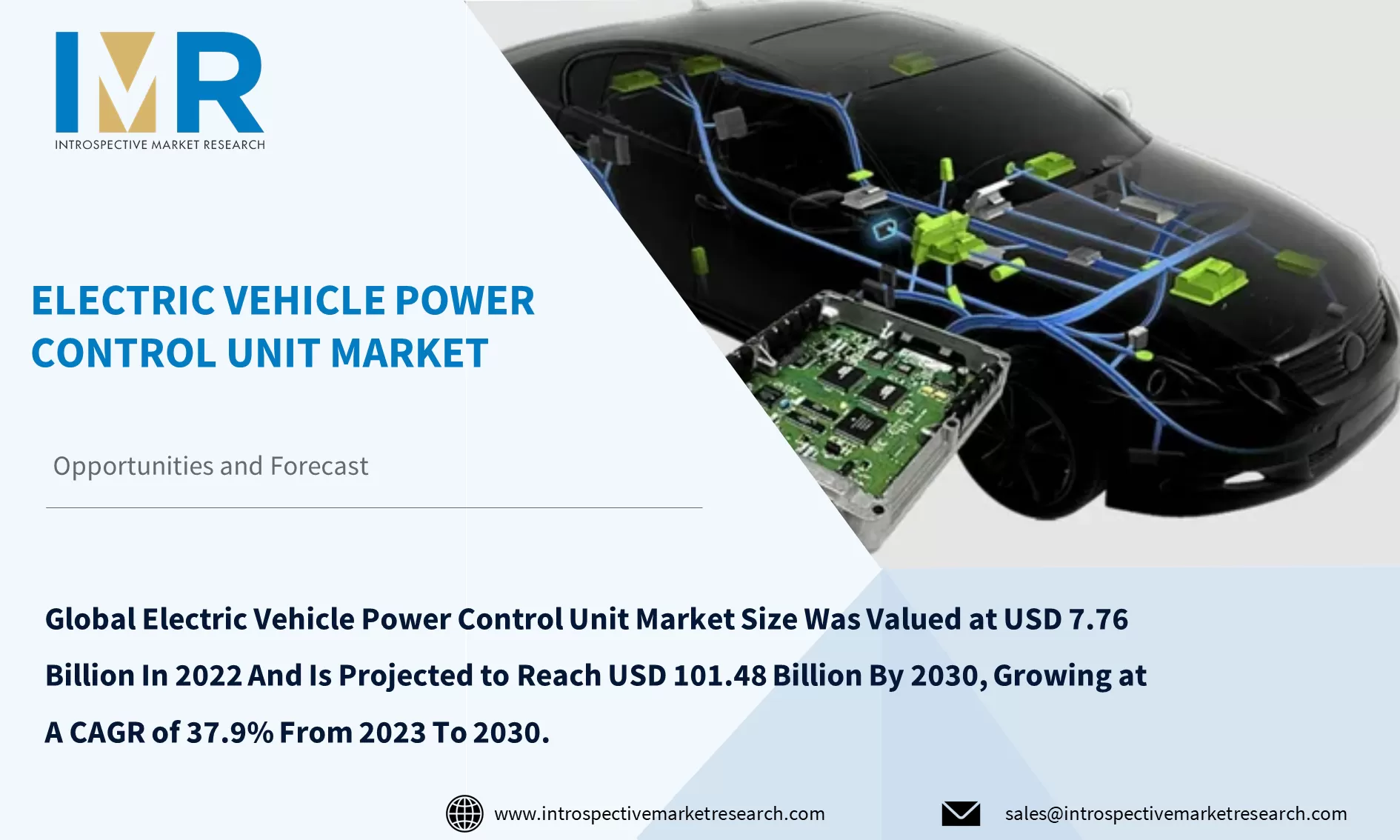
Market Overview:
Global Electric Vehicle Power Control Unit Market Size Was Valued at USD 7.76 Billion In 2022 And Is Projected to Reach USD 101.48 Billion By 2030, Growing at A CAGR of 37.9% From 2023 To 2030.
Nearly all of the components that regulate the flow of electric power in a vehicle are effectively integrated into the Electric Power Control Unit (EPCU). The inverter, Low Voltage DC-DC Converter (LDC), and Vehicle Control Unit make up this component (VCU). The inverter transforms the DC from the battery into AC, which is then utilized to regulate the motor speed. The system plays a key role in maximizing the drivability of the EV because it controls acceleration and deceleration. Power electronics in electric vehicles are in charge of converting and managing the system's supply of electric power. The electric vehicle system uses some of the main power electronic components and functionality.
Top Key Players in Electric Vehicle Power Control Unit Market:
Denso Corporation, Robert Bosch GmbH, Infineon Technologies AG, Delphi Technologies, Continental AG, Hitachi Automotive Systems Ltd., Valeo, Mitsubishi Electric Corporation, Robert Bosch GmbH, Hella, Panasonic Corporation, Tesla Inc., Toyota Industries Corporation, and Other Major Players
Market Dynamics and Factors for Electric Vehicle Power Control Unit Market:
Drivers:
Surge In Demand For Energy-Efficient Battery-Powered Vehicles
The surge in demand for energy-efficient battery-powered vehicles has indeed been a significant driver for the Electric Vehicle (EV) Power Control Unit (PCU) market. The transition towards electric vehicles is driven by various factors, including concerns about environmental sustainability, government regulations, advances in battery technology, and consumer interest in reducing their carbon footprint. This shift has led to an increased demand for EV components, including power control units. As more consumers and businesses choose electric vehicles as their primary mode of transportation, the overall demand for EV-related components, including power control units, has risen.
Opportunities:
Increasing Demand For Innovative Technologies
The introduction of autonomous vehicles has resulted in the development of software technologies. Several other features have been added to the automotive cockpit. These include battery management system, advanced gesture controls, reconfigurable instrument cluster, and charging indicator. Most of the ultra-premium and premium vehicles have two or more unique displays that provide information about HVAC, parking, infotainment, and vehicle diagnostics. The increased incorporation of such features is expected to drive the market for vehicle control units in the future. The trend is more evident in developed economies where purchasing power is higher. Therefore, electronic systems are increasingly incorporated to provide better safety, comfort, and convenience. With the interconnected functions in vehicles, powerful VCUs would be required in compact size.
Segmentation Analysis of the Electric Vehicle Power Control Unit Market:
- By Vehicle Type, the Plug-in Hybrid Vehicle (PHEV) segment is Anticipated to Dominate the Market Over the Forecast period. PHEVs combine an internal combustion engine with an electric motor and a battery. This setup allows them to operate in both all-electric mode (using battery power) and hybrid mode (using both the engine and the electric motor).
- By Application, the Inverter segment is Anticipated to Dominate the Market Over the Forecast period. Inverters play a significant role in converting direct current (DC) from the vehicle's battery into alternating current (AC) to power the electric motor. This conversion is essential for the operation of electric and hybrid vehicles.
Regional Analysis of the Electric Vehicle Power Control Unit Market:
Asia Pacific is expected to be the fastest-growing and the largest vehicle control unit market during the forecast period. The market growth in the region can also be attributed to the rising demand for autonomous driving functions in BEVs, HEVs, and PHEVs. Also, Asia Pacific is home to many OEMs that are focusing on vehicle electronics technologies through R&D, especially in Japan and China. Japan plays a vital role in automotive technologies in Asia Pacific. It is the largest market for technologically advanced vehicles with advanced automotive electronics. China?s rapidly growing electric vehicle sales and strong R&D in the automotive sector is driving the vehicle control unit market in the country. With favorable government regulations for electric vehicles, India can be a great potential market for vehicle control units.
Key Industry Development:
- May 2022, Hitachi Energy, a leader in power grid technology and the market, will introduce RoadPak, a ground-breaking power semiconductor module for electric vehicles.





